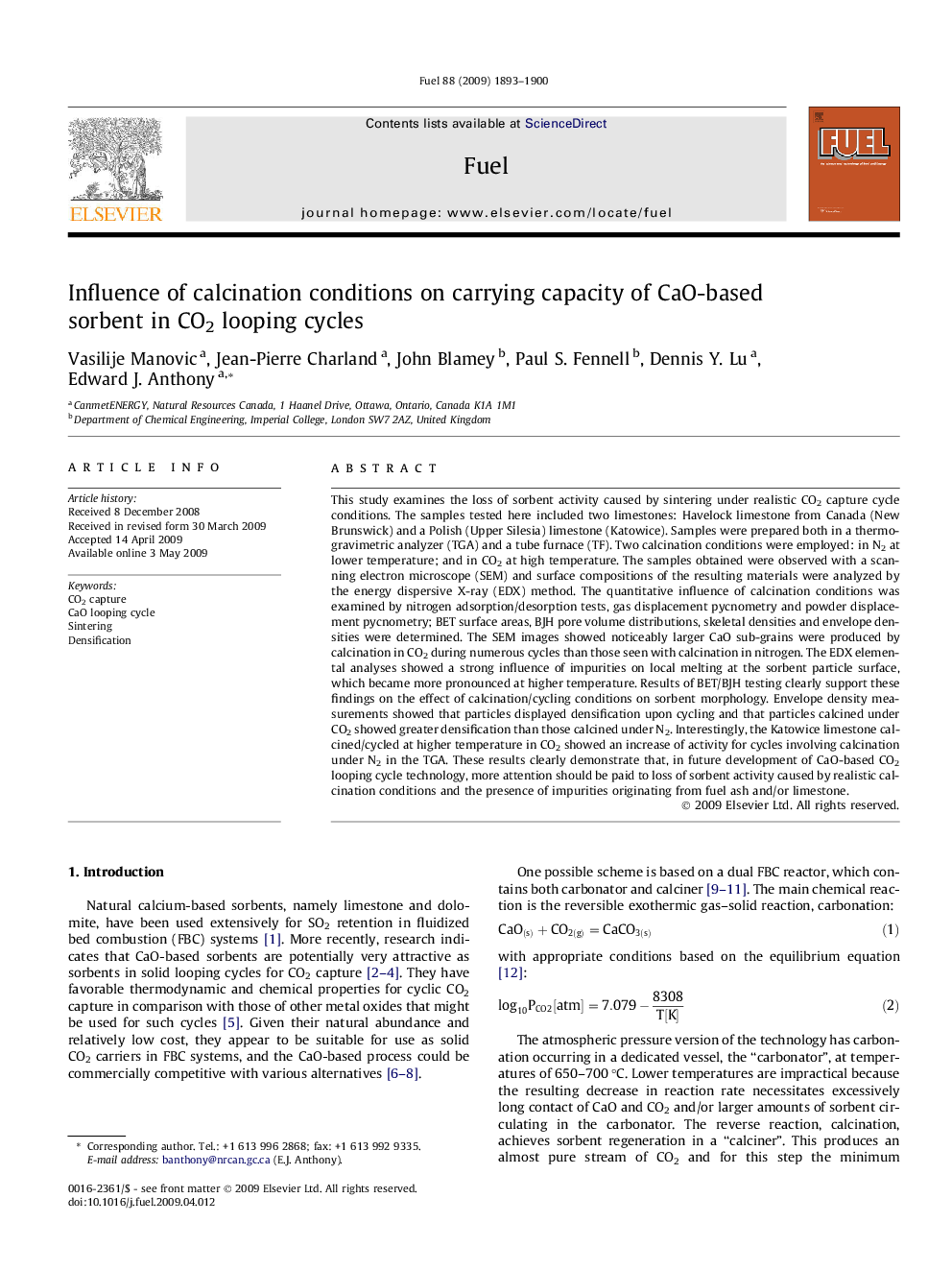| کد مقاله | کد نشریه | سال انتشار | مقاله انگلیسی | نسخه تمام متن |
|---|---|---|---|---|
| 206902 | 461202 | 2009 | 8 صفحه PDF | دانلود رایگان |

This study examines the loss of sorbent activity caused by sintering under realistic CO2 capture cycle conditions. The samples tested here included two limestones: Havelock limestone from Canada (New Brunswick) and a Polish (Upper Silesia) limestone (Katowice). Samples were prepared both in a thermogravimetric analyzer (TGA) and a tube furnace (TF). Two calcination conditions were employed: in N2 at lower temperature; and in CO2 at high temperature. The samples obtained were observed with a scanning electron microscope (SEM) and surface compositions of the resulting materials were analyzed by the energy dispersive X-ray (EDX) method. The quantitative influence of calcination conditions was examined by nitrogen adsorption/desorption tests, gas displacement pycnometry and powder displacement pycnometry; BET surface areas, BJH pore volume distributions, skeletal densities and envelope densities were determined. The SEM images showed noticeably larger CaO sub-grains were produced by calcination in CO2 during numerous cycles than those seen with calcination in nitrogen. The EDX elemental analyses showed a strong influence of impurities on local melting at the sorbent particle surface, which became more pronounced at higher temperature. Results of BET/BJH testing clearly support these findings on the effect of calcination/cycling conditions on sorbent morphology. Envelope density measurements showed that particles displayed densification upon cycling and that particles calcined under CO2 showed greater densification than those calcined under N2. Interestingly, the Katowice limestone calcined/cycled at higher temperature in CO2 showed an increase of activity for cycles involving calcination under N2 in the TGA. These results clearly demonstrate that, in future development of CaO-based CO2 looping cycle technology, more attention should be paid to loss of sorbent activity caused by realistic calcination conditions and the presence of impurities originating from fuel ash and/or limestone.
Journal: Fuel - Volume 88, Issue 10, October 2009, Pages 1893–1900